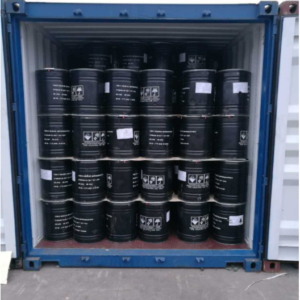Description
What is Polyacrylamide?
Polyacrylamide is a synthetic polymer with a linear or slightly cross-linked structure, designed for enhancing solid-liquid separation processes. It works primarily by flocculating (clumping) fine particles into larger masses, enabling faster settling or easier filtration.
Depending on the ionic nature, PAM can be tailored to interact with different types of suspended solids:
-
Anionic PAM – Best for inorganic or mineral-rich waters (e.g., mining tailings).
-
Cationic PAM – Ideal for organic sludge and municipal wastewater.
-
Nonionic PAM – Used in low ionic strength systems or acidic conditions.
-
Amphoteric PAM – Contains both positive and negative charges for broad-spectrum flocculation.
Technical Specifications of Polyacrylamide
| Property | Typical Value |
|---|---|
| Physical Appearance | White powder, granules, or emulsion |
| Ionic Charge Type | Anionic, Cationic, Nonionic, Amphoteric |
| Molecular Weight | 5 to 25 million Dalton (varies by type) |
| Solubility in Water | Fully soluble |
| Degree of Hydrolysis | 5% – 40% (anionic) / 5% – 80% (cationic) |
| Recommended pH Range | 4 – 10 |
| Shelf Life | 1–2 years (cool, dry conditions) |
Common Applications of Polyacrylamide
1. Water and Wastewater Treatment
Polyacrylamide is extensively used in municipal and industrial treatment systems to remove turbidity, suspended solids, and organic matter. It improves sedimentation, filtration, and sludge dewatering efficiency.
2. Mining and Mineral Processing
In mining, PAM is employed for tailings management, ore clarification, and solid-liquid separation. It helps recover process water and enhances environmental sustainability.
3. Enhanced Oil Recovery (EOR)
In the oil industry, high molecular weight PAM is injected into wells to increase viscosity and improve oil displacement, boosting extraction rates.
4. Papermaking
Polyacrylamide is used to enhance fiber retention, drainage, and paper strength, improving both efficiency and quality in paper manufacturing.
5. Agriculture and Soil Conditioning
Cross-linked PAM helps reduce soil erosion and water runoff in agriculture, promoting better moisture retention and nutrient stability.
6. Textiles and Cosmetics
PAM functions as a thickener, binder, and film-former in various textile treatments and cosmetic formulations.
Key Benefits of Using Polyacrylamide
✅ Excellent flocculation and sedimentation performance
✅ Customizable charge and molecular weight for specific needs
✅ Improves filtration, reduces sludge volume
✅ Cost-effective and environmentally friendly when properly used
✅ Compatible with a wide range of industrial processes
Its low dosage requirements and high efficiency make PAM a popular choice for companies aiming to meet regulatory standards and lower treatment costs.
Safety and Handling
While Polyacrylamide is generally non-toxic, the monomer acrylamide used in its production can be hazardous in its unpolymerized form. Commercial-grade PAM contains extremely low levels of residual acrylamide and is considered safe for water treatment applications. However, proper handling—wearing gloves, masks, and avoiding inhalation of powders—is essential. Always follow MSDS safety guidelines.
Final Thoughts
Polyacrylamide (PAM) is a powerful and adaptable chemical used across numerous industries to solve complex solid-liquid separation and water treatment challenges. Whether it’s improving municipal water clarity, enhancing oil recovery, or aiding paper production, PAM offers efficiency, flexibility, and environmental compliance.
With customizable formulations and broad-spectrum applicability, polyacrylamide continues to be an essential tool for companies focused on sustainability, process efficiency, and regulatory excellence.








![ferric aluminum sulfate GRANULAR 16% [furrous]](https://mjrdchemhome.com/wp-content/uploads/2025/04/camachem_-_ferric_aluminium_granular_1_-300x300.jpg)
